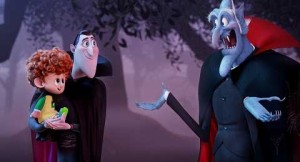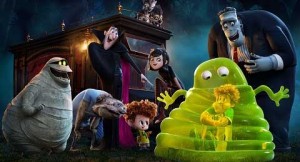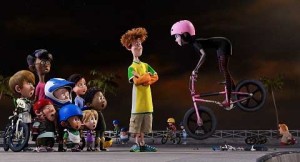
Sony Pictures Animation recently tapped supervising sound editor Geoffrey Rubay and his sound team from Sony Pictures Post Production Services for the animated comedy Hotel Transylvania 2, directed by Genndy Tartakovsky.
They worked alongside re-recording mixers Tom Johnson and Michael Semanick, composer Mark Mothersbaugh and music editor Andy Dorfman in building the movie’s soundtrack. Rubay has created sound for four animated features for Sony Pictures including the original 2012 Hotel Transylvania film as well as both installments of the Cloudy with a Chance of Meatballs franchise.
“It’s rare to keep a team intact through four features and it has really helped us to refine and up our game,” said Rubay. Other sound crew included supervising ADR/dialogue editor Curt Shulkey, sound effects editors Ryan Collins and John Dunn, Foley supervisor James Morioka, Foley editor Jon Wakeham, Foley artists Sarah Monat and Robin Harlan, Foley mixer Randy Singer, ADR mixer Howard London, re-recording mix technician Fred Peck III and apprentice Alec Rubay. ADR voice casting was performed by Caitlin McKenna.
 The sound team on Hotel Transylvania 2 was challenged not simply to match their earlier efforts, but to find ways to push further. In this case, there was plenty of opportunity to do so, as the new feature introduces additional characters, locations and plot twists that required inventive sound treatments.
The sound team on Hotel Transylvania 2 was challenged not simply to match their earlier efforts, but to find ways to push further. In this case, there was plenty of opportunity to do so, as the new feature introduces additional characters, locations and plot twists that required inventive sound treatments.
“We had a much wider variety of monsters to work with,” Rubay explained. “The cronies, who are large man-bats, were an especially interesting challenge.” Rubay and his team created the signature wing sounds produced by these over-sized creatures by blending recordings of cardboard, plastic sheeting, a leather jacket and even lighting gobos borrowed from the Sony Pictures lighting department.
The team was also charged with creating a number of new sound environments as the plot for the new feature has the characters venturing out from their hotel home into the broader world. For one memorable action sequence, recordists captured sounds of motocross racers roaring around a Southern California BMX track.
In some instances, the sound team refined or reimagined sound treatments for returning characters. Notable among these is Blobby, a green Jell-O-like creature whose body is composed of thick gelatinous rings. “The treatments for his voice and movement were very complex,” recalled Rubay. “It was very challenging to capture the blobby-ness of him… his wet, burbling essence.”
 Blobby’s voice is actually a mix of several vocal performances. “We took the best bits of the vocalizations and melded them with gurgling, wobbly sounds to create the final product,” said Rubay.
Blobby’s voice is actually a mix of several vocal performances. “We took the best bits of the vocalizations and melded them with gurgling, wobbly sounds to create the final product,” said Rubay.
“And it scaled really well,” he added, noting that at one point, Blobby inflates to the size of a blimp. “We got expansive with it; we let it go with the picture and followed it wherever it led us.”
Tartakovsky was constantly encouraging the sound team to make the sound treatments bigger and better, according to Rubay. “Genndy is a fantastic director,” he said. “He is good at describing what he wants and he doesn’t deviate. He puts up the target and we try to hit it.”





